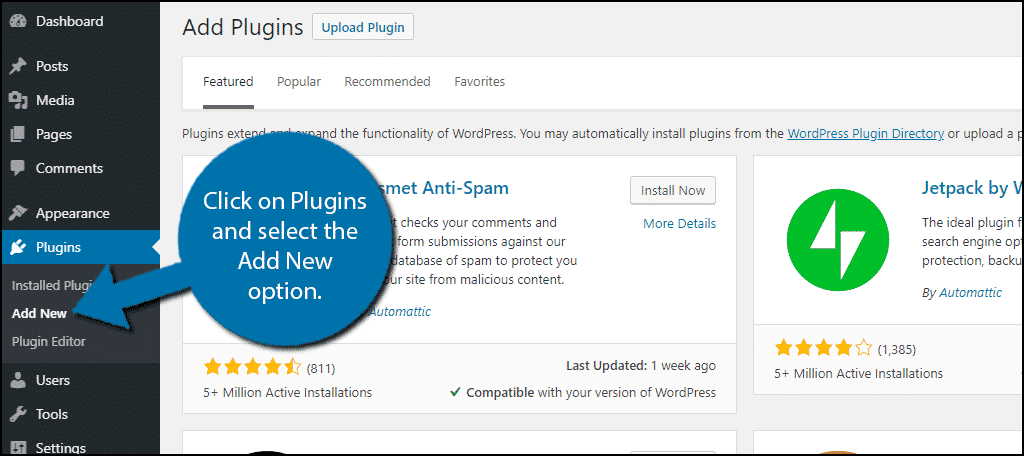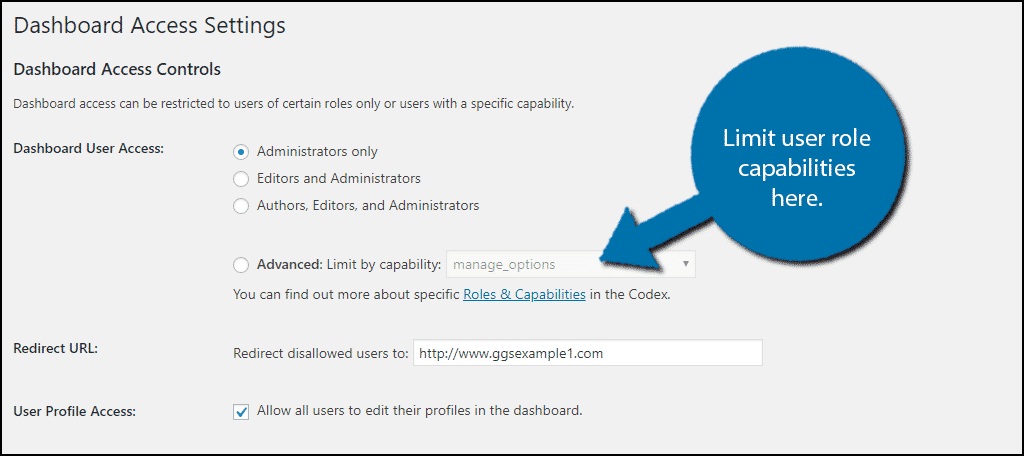Are you looking to block access to your dashboard area in WordPress? The dashboard area can show you statistics, activity, messages, and other various forms of information. The dashboard is only visible to users who have a WordPress account, however, they will not see your dashboard unless they have a certain user role.
By default, you will never have visitors or normal users able to see your dashboard, but other roles like authors and editors will be able to. You can also create other user roles and grant them access, but depending on the information displayed in the dashboard, you will not want everyone to see it. Today, I will demonstrate how to block dashboard access in WordPress using the Remove Dashboard Access plugin.
Why Block/Limit Dashboard Access
When first starting a WordPress website, it is very likely it is a single author website that is started by one person and grows. As it grows it will become a multi-author website and more staff will be hired to help you manage the website and create more content. With more staff members, you will have more people with access to your dashboard. This can be a big problem depending on the nature of the information.
For example, let’s say you display how much traffic/activity your website gets on your dashboard. This can tip off staff members to how much your website is roughly making, which can be problematic for a lot of reasons, like employees asking for higher pay. It can also show them any other information on the dashboard which can be a serious concern.
Thus, at this point, you have a few options. You can change what is displayed on the dashboard so that nothing important is seen. This, however, takes away a lot of options for what you can do with the dashboard. Instead, a better solution is to block access by user role. This will ensure that administrators or any other roles you choose will have access to the dashboard.
How to Block Dashboard Access in WordPress
Today, I will demonstrate how to block dashboard access in WordPress using the Remove Dashboard Access plugin. The plugin is very simple and straightforward to set up. Simply choose which user roles have access to the dashboard and the rest will lose access to the dashboard. You can set up a redirect to the page of your choice inside of the plugin if you wish, but it is not necessary.
Installing Remove Dashboard Access
To start, click on Plugins and select the Add New option on the left-hand admin panel.

Search for Remove Dashboard Access in the available search box. This will pull up additional plugins that you may find helpful.

Scroll down until you find the Remove Dashboard Access plugin and click on the “Install Now” button and activate the plugin for use.

On the left-hand admin panel click on Settings and select the Dashboard Access option. This will pull up the main settings page.

Blocking Access to the Dashboard
This is the main settings page of the plugin and as you can see there is not much to do here. The plugin allows you to restrict access to the dashboard, limit role capabilities, and create a redirect.
By default, it has administrators only selected for dashboard access. The other options allow you to include the Author and Editor as well. Choose the option that is best for your website.

Alternatively, you can choose to limit the capabilities of non-administrator roles. This can be confusing if you are not knowledgeable about user role capabilities. It is better to not choose to limit capabilities if that is the case.

You can set up a redirect by inserting the URL inside of the Redirect URL box. The default is your homepage, but you should choose the page you think is most appropriate.

Click on the “Save Changes” button when you are done making changes.

Congratulations, you have successfully blocked specific user roles access to your dashboard. You can change any of these settings at any time if you need to by visiting the plugin’s settings page.
Try to Utilize Your Dashboard Effectively
While you can use your dashboard to monitor the various activities and stats in WordPress, you can also use it for other things that can benefit the rest of your staff. For example, you can use your dashboard to display messages and schedules for your employees to follow.
Although there are plenty of other ways to do this, having it directly on the dashboard can be convenient. It is important to consider all of the options you are losing when you decide to block other user roles from accessing the dashboard, but you can always change it.
Why do you want to block access to the dashboard in WordPress? How easy do you find the plugin to use?
